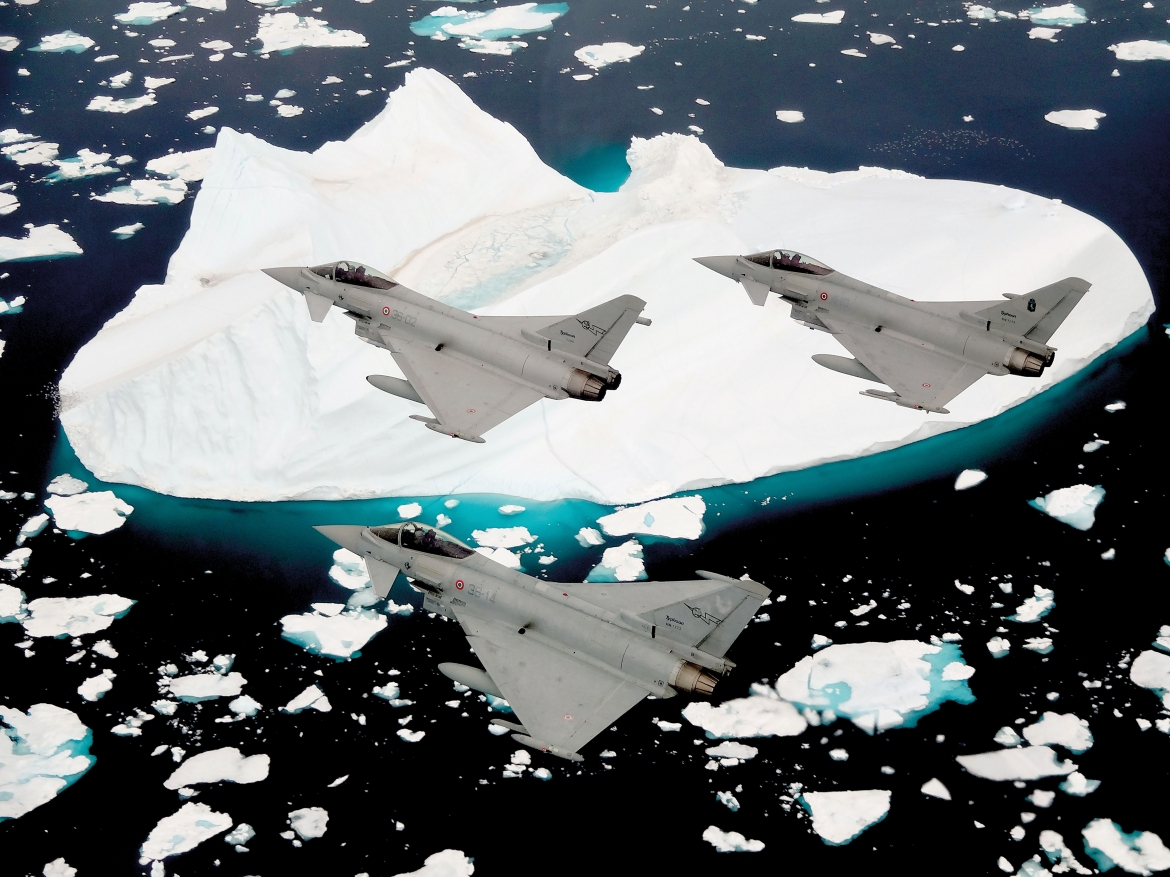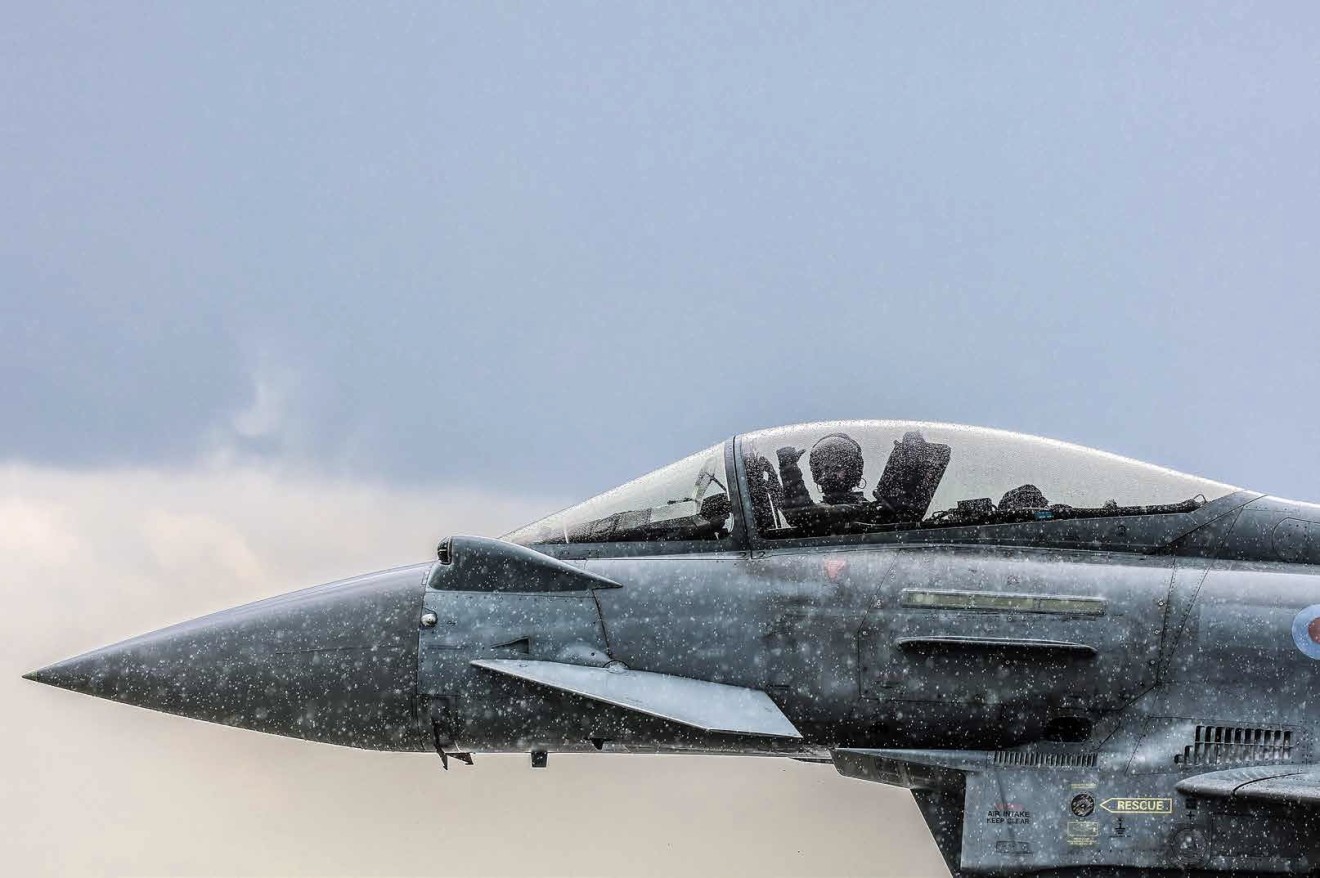
Flight Lieutenant James Sainty is an experienced Typhoon pilot. Over the past 5 years he has flown at two Red Flag Exercises in Las Vegas, twice deployed on operations in Iraq and Syria, been to the Falklands three times and to Oman twice, for Exercise Magic Carpet. If anyone knows how the aircraft perform in the extreme climate conditions, he does.
“In the Falklands, the weather is actually very similar to the UK. It's just very windy,” says Flight Lieutenant Sainty.
“It actually a pleasure to fly Typhoon in a crosswind with its flight control system, all I have to do when I’m coming down to land is ease the rudder in until about 10 feet to go. It's very simple.
“In other aircraft, it’s a lot more complicated because of the way the controls work. It’s often much more of an art to get them on the ground, whereas with Typhoon it’s very easy, very simple.
One of the tensest times he has ever faced in the Typhoon was flying out to Red Flag one year.
“We were flying out of Eglin Air Base in Florida and just joining up with our Voyager transport when we hit some of the biggest thunderstorms that I've ever seen,” recalls
Flight Lieutenant Sainty. “We had to fly into one of the storms where the turbulence and icing was severe, there was even some lightning in the cloud as well. Luckily none of us got hit by it.
“But the fact was the Typhoon was able to handle that sort of violent turbulence. In fact, we all managed to remain in formation and because of the power of the jet we were able to get through it. The manoeuvrability of the jet showed that day was really quite impressive. We we're all a little bit shaken up by that experience and when we got back on the ground, we were all talking about it.”
